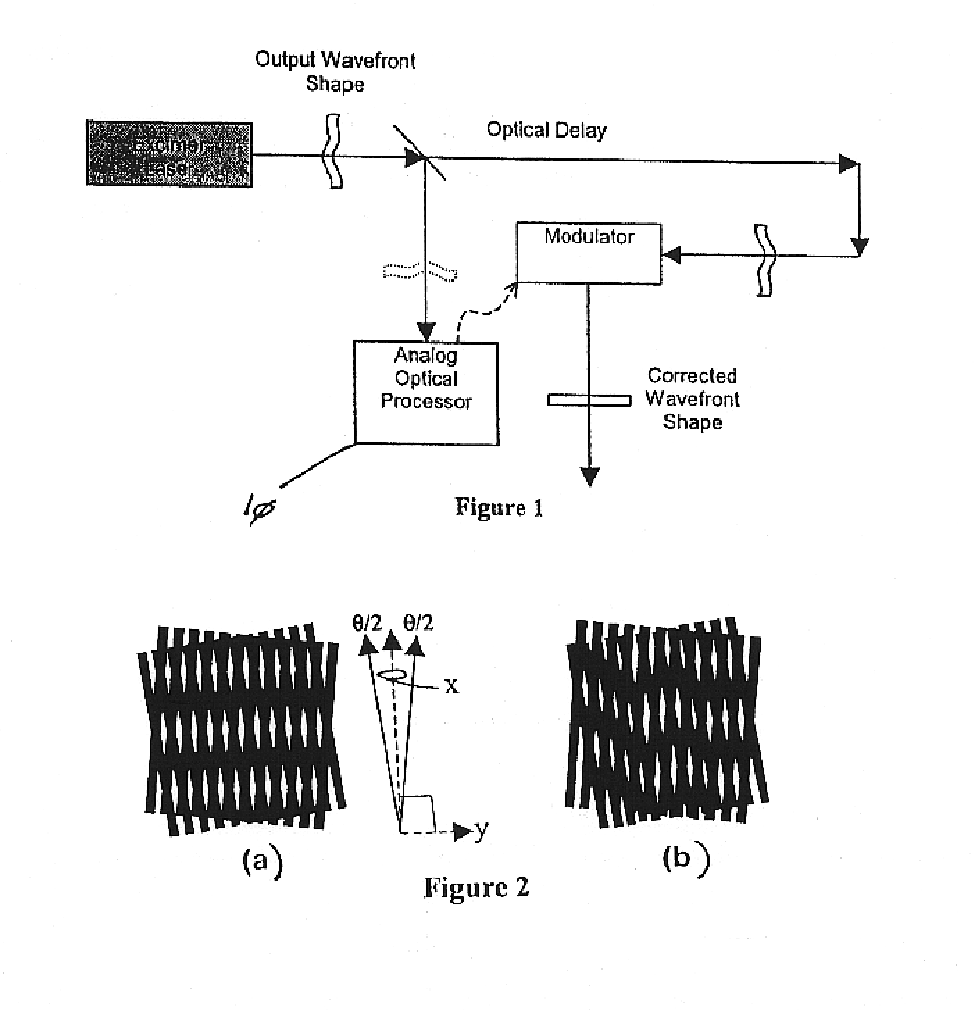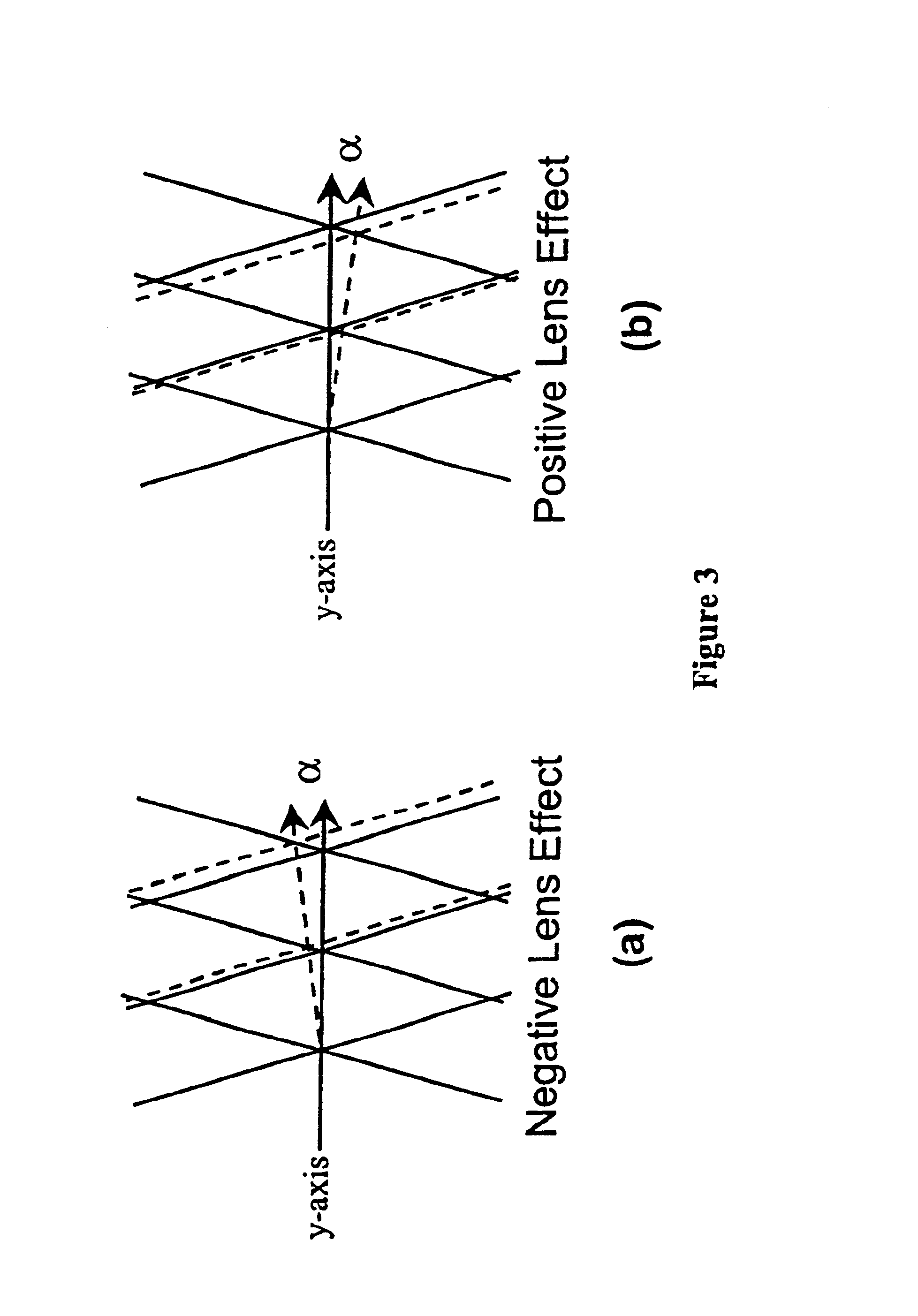Fourier moire wavefront sensor
a moire wavefront and sensor technology, applied in the field of optical wavefront sensors, can solve the problems of limited sensor dynamic range, dynamic range, sensitive alignment issues, and trade-offs between diffractive effects and sensitivity,
- Summary
- Abstract
- Description
- Claims
- Application Information
AI Technical Summary
Benefits of technology
Problems solved by technology
Method used
Image
Examples
Embodiment Construction
)
The present invention is of a Fourier moire wavefront sensor that uses moire deflectometry and the Fourier transforming properties of a lens to optically compute wavefront curvature of incident light. In a moire deflectogram, the angle of the fringes indicates the magnitude and sense of the wavefront curvature incident on the first grating. In the present invention, two gratings produce moire deflectograms. A frequency filter is placed in the Fourier plane of the lens, which has a variable transmission profile. When wavefront aberrations induce changes in the moire deflectogram, they also change the deflectogram's frequency information in a characteristic way at the Fourier plane. The broadening of particular frequency components is such that the angle of the fringes in the deflectogram is encoded as intensity information by the filter, downstream, in the image plane. Hence, wavefront curvature is encoded directly as intensity information. Optimally, 50% transmission corresponds to...
PUM
 Login to View More
Login to View More Abstract
Description
Claims
Application Information
 Login to View More
Login to View More - R&D
- Intellectual Property
- Life Sciences
- Materials
- Tech Scout
- Unparalleled Data Quality
- Higher Quality Content
- 60% Fewer Hallucinations
Browse by: Latest US Patents, China's latest patents, Technical Efficacy Thesaurus, Application Domain, Technology Topic, Popular Technical Reports.
© 2025 PatSnap. All rights reserved.Legal|Privacy policy|Modern Slavery Act Transparency Statement|Sitemap|About US| Contact US: help@patsnap.com



